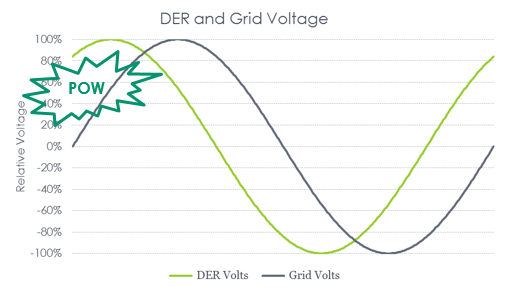
A couple years ago at an AESP conference, we had a fascinating speaker and topic. It was one of those that had me thinking deeply and philosophically. The subject was technology and the future. The takeaway: every problem is either a technical problem or one of human flaw.
As for technical problems, there is nothing short of violating the laws of physics, including the second law of thermodynamics, that humans can’t and won’t someday solve: cancer, heart disease, failed or destroyed body parts, and of course, energy, and even aging. As we say at Michaels, (although we are not yet working on lab-grown corneas) anything is possible. How much do you want to pay for it?
The only issues that will remain are philosophically human. These include ignorance, bias, egos, religion, and the seven deadly sins. For example, do we really want to live 400 years with a bunch of replaced body parts? Imagine the consequences!
Along the road of progress, there are periods of moving sideways or backward. Micro-distributed energy resources (DERs) are one such detour.
I wrote extensively about the bad idea, or solution in search of a problem, that micro-distributed energy is back in Distributed Energy, Batteries and Bread Machines, a little over a year ago. I won’t rehash that, but you should go there for the clear argument of the folly.
As they say, let’s advance the story.
Electric Utility Background
What has changed in the world of power generation and delivery in the last hundred years? Utilities began as centralized supply with distribution to its customers. They were islands with no resilience in case of prime mover[2] failure. It was expensive to add 100% backup, so utilities started to network into a grid to provide resiliency at low cost.
Engineers have developed a nearly optimal (in hindsight, things could have always been done better) balance of low cost and resiliency through economies of scale and a network of transmission to keep the lights on. It’s beautiful. They were brilliant. They figured out how to measure true kilowatts, accounting for power factor, with an old style electromagnetic meter – a technology that endured for 100 years. They were smart enough to leave it alone.
Uneconomies of Tiny Scale
So what do we do? Attempt to revolutionize the grid by going the other way integrating micro-scale DERs.
Consider standby generators sprinkled from sea to shining sea, at the ready in case there is a power outage. All critical services have these, including hospitals, large data centers, farms, and many others. These assets are just sitting there doing nothing all the time, except for short periods of testing. Why not tap these assets? Because it is expensive and complicated.

For instance, many of the loads served by these units are first disconnected from the grid before the loads are switched over to the backup generator. When grid power is restored, the load is disconnected from the generator and switched over to the grid.
Any DER, when integrated to supply power to the grid, must be synchronized to precisely match the sine wave of the grid. For example, if there is an offset in power phase, as shown in the chart, a ghastly fireball will result because of the large voltage difference.
To avoid this, we need big expensive paralleling switchgear. Per my research here, here, and here, the switchgear is half as much as the generator set itself. The upshot: in the Midwest, it isn’t cost effective or worthwhile for customers to use these assets that are already a sunk cost.
As for residential scale batteries, the cost of the batteries (Powerwall) levelized over the life of the battery is nearly the same (11.7 cents) as the cost of electricity. Except the Powerwall produces no electricity. None. Customers need to make their own or buy it from the grid. What is the TRC on that? About 0.25?
Until a bona fide flux capacitor is a reality, or maybe even time travel, the cost of battery storage will be cost prohibitive for offsetting conventional generation. However, I do believe batteries are needed as a virtual flywheel for voltage and frequency regulation.
Frivolous novelties (electric cars) are also being evaluated for DERs. Pause for a moment. Consider:
- Charge a car battery during the day with solar PV
- Drive home and feed the grid with the car battery, that was charged by PV, to alleviate problems caused by charging the car with PV
- Low battery
- Recharge with conventional sources to get back to work the next day
It may not be that pure, but that is what it does. Why not just add more batteries to the grid? Oh, because they produce no power and they cost as much as electricity itself.
Stop the Madness
This gambit is driven by certain manufacturers and CONsultants trying to improve a systemic model that is not quite damn near perfect.
- Renewable energy is good up to about 30% of supply.
- Batteries are good for frequency and voltage response to support heavy renewable penetration.
- Tens of thousands of residential-scale DERs (for customer emergency power) will never be more cost effective than utility scale DERs.
- Demand response, anyone?
[1] Eddie Brickell and the New Bohemians
[2] Steam turbine or internal combustion engine.






Join the discussion One Comment